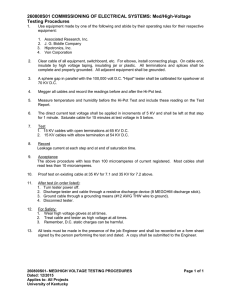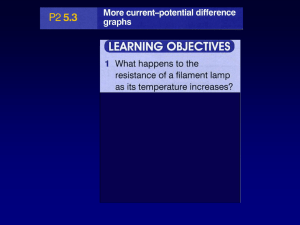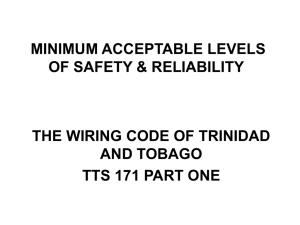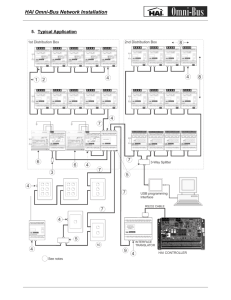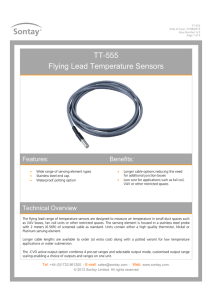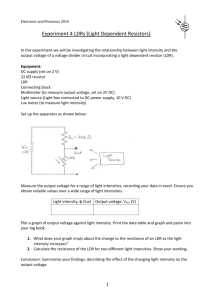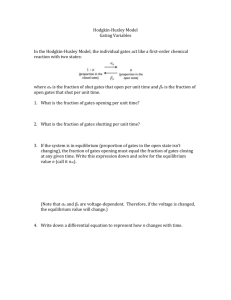Comparison of National 4 and National 5 Practical Electronics
advertisement
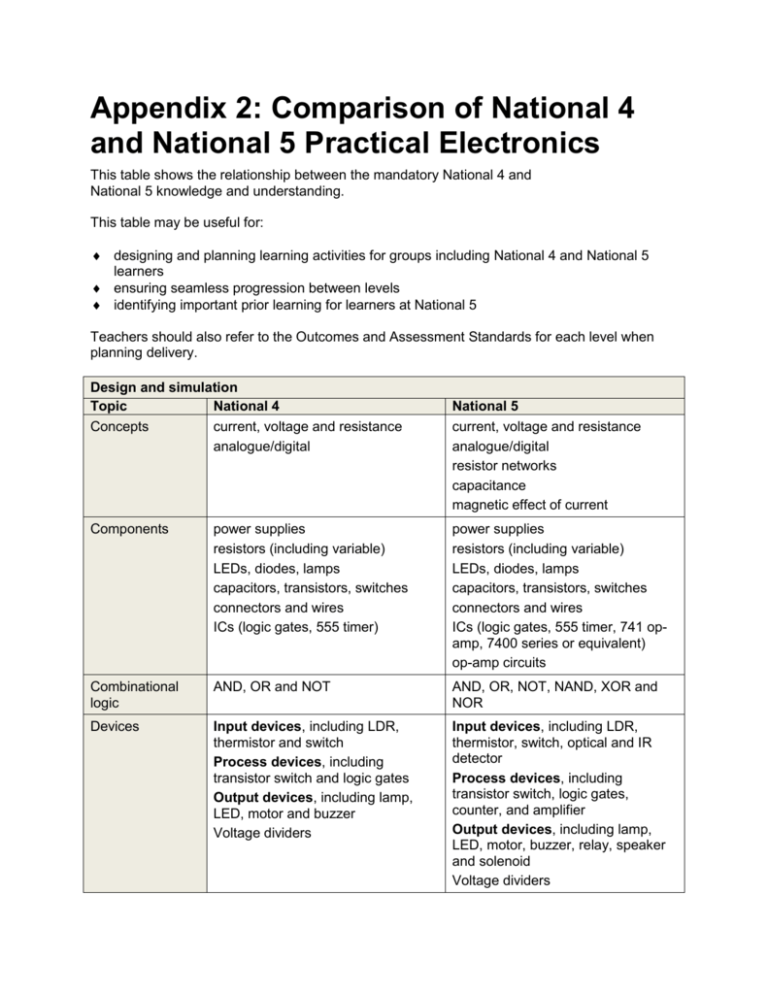
Appendix 2: Comparison of National 4 and National 5 Practical Electronics This table shows the relationship between the mandatory National 4 and National 5 knowledge and understanding. This table may be useful for: designing and planning learning activities for groups including National 4 and National 5 learners ensuring seamless progression between levels identifying important prior learning for learners at National 5 Teachers should also refer to the Outcomes and Assessment Standards for each level when planning delivery. Design and simulation Topic National 4 Concepts current, voltage and resistance analogue/digital National 5 current, voltage and resistance analogue/digital resistor networks capacitance magnetic effect of current Components power supplies resistors (including variable) LEDs, diodes, lamps capacitors, transistors, switches connectors and wires ICs (logic gates, 555 timer) power supplies resistors (including variable) LEDs, diodes, lamps capacitors, transistors, switches connectors and wires ICs (logic gates, 555 timer, 741 opamp, 7400 series or equivalent) op-amp circuits Combinational logic AND, OR and NOT AND, OR, NOT, NAND, XOR and NOR Devices Input devices, including LDR, thermistor and switch Process devices, including transistor switch and logic gates Output devices, including lamp, LED, motor and buzzer Voltage dividers Input devices, including LDR, thermistor, switch, optical and IR detector Process devices, including transistor switch, logic gates, counter, and amplifier Output devices, including lamp, LED, motor, buzzer, relay, speaker and solenoid Voltage dividers Circuit Complexity Minimum of 2 inputs, 1 output Impacts on society and environment Construction Topic Construction materials Wiring and assembly techniques Safe working practices Multiple inputs, more than one output recycling pathways social, environmental, economic impact miniaturisation National 4 Use of prototype board, stripboard and PCB National 5 Use of prototype board, stripboard and PCB Awareness of other types of construction, including tripad and surface mount technology Uses of cable types, including single strand, multi-strand, ribbon, twisted pair, co-axial cable and fibre optic cable crimp connections, terminal block heat shrink, spiral wrap cable ties, markers stripping and connecting bundling and fixing safe use of tools including: crimp connections, terminal block heat shrink, spiral wrap cable ties, markers stripping and connecting bundling and fixing safe use of tools including: soldering irons eye protection soldering irons eye protection COSHH sheets

